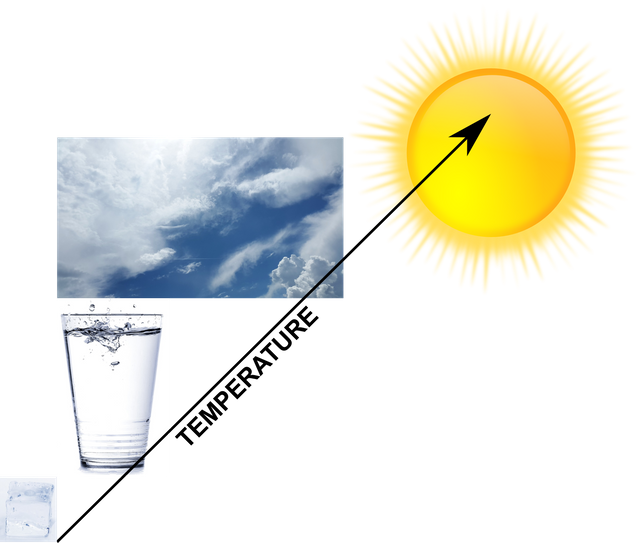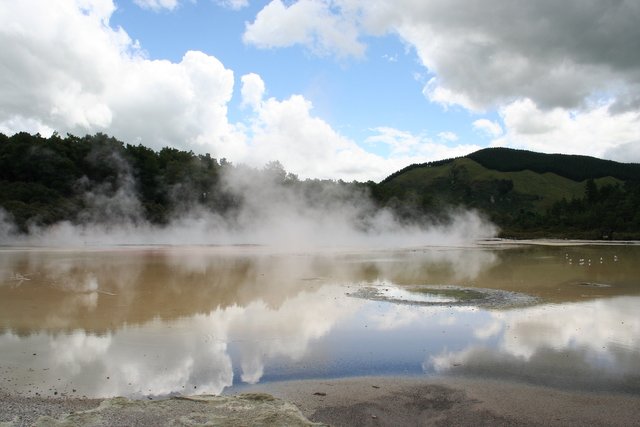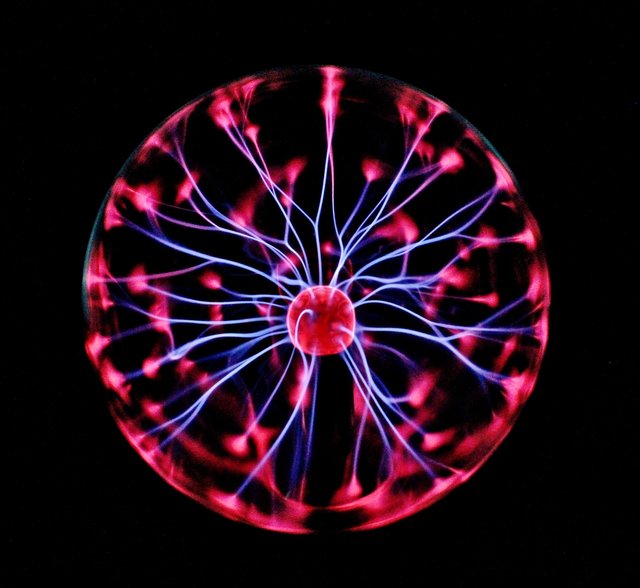NF.4 Plasma as the State
In my last NF article you could read that the temperature reaches millions of degrees Celsius. But how is such extraterrestrial temperature even possible? Short answer is: PLASMA!
The long(er) answer you can read here. Notice that there are still much longer explanations, such as series of books or graduate university program on physics or life-long research...
4th State of Matter
Here on the Earth, we are very familiar with the concept of 3 states of the matter: solid, liquid and gas. What if I tell you that there is the fourth one?
The story goes as follows.
First, we have the solid state, where the atoms are well arranged and organized in the lattice. We say that solid matter is nicely packed and dense. The atoms still move, but the movement is quite restricted to oscillations around the position in the lattice mesh. But what happens when we add energy (i.e. heat or temperature) to the solid object – ice, for example?
Ice will melt and become water, right? Yes, that is correct! But why this happens? Because we added enough energy to the system so that the atoms start to wiggle more and more. In the end, they are not anymore bounded to the lattice and we get the liquid. In the liquid state, atoms do interact between each other, but there is no real restriction to the location as for the solids. There is no packing, but the density is still big so atoms are close enough to hit each other. And again, what happens when we add energy to the liquid object – water, to continue with the same example?
Water will evaporate and become water vapor, right? Yes, of course! But can you explain it to yourself why this happened? Think for a moment before you continue reading . . . As we had earlier, the system got enough energy so that atoms are now really fast. Due to large speeds they not interacting (collide) with each other anymore. Here we got a new state of matter - gas. Atoms travel to fast and they are so distant (rare matter), that there is no time for interaction to happen. But did you ever wonder what happens when you heat up the water vapor?
Technically, the first thing to happen will be splitting of water H2O atom to 2 hydrogens and 1 oxygen atoms. We still have gas, but not the water vapor. And what if we add even more energy?
An electron from an atom will pop-out creating now an electron-ion pair. So instead of having 1 neutral particle (atoms), we have 2 charged particles (negative electron and positive ion). And that is the next state of matter - plasma. Simply said: plasma is the soup of electrons and ions.
But what makes plasma different from other states of matter? It does have some properties of the gas, as the particles are moving even faster and densities are usually even smaller than in the gas. The part of physics that explains this behavior is kinetic theory. However, due to their charge, we have to take into account electric forces. Those forces are strong, long ranged and fast due to the speed of light. So in some level, plasma does behave like a liquid too. There is the whole theory behind this part name magnetohydrodynamics or simply MHD. Besides, plasma has some more complicated nature in combination with gas-like and liquid-like ones. And all of that makes it so complex and gives material for the books and courses I mention in the beginning.
Where is plasma . . .
You may ask now: where are such conditions possible? The answer is the Universe! More than 99% of the Universe is in the plasma state of matter.
The most common examples: the Sun and other stars, comet tail, interplanetary and intergalactic space.
. . . on Earth?
OK, but you might think now “where the hell is plasma on the Earth?!” Luckily for us and life on the Earth in general, plasma is rarely occurring on the Earth. In numbers, probably less than 0.1% of the matter on the Earth is plasma. So Planets are practically oasis in the Plasma Universe. But where is it?
Natural common examples: lightning/thunderbolt, fire (part of it), Aurora (polar light), some upper parts of the atmosphere and Earth’s core.
Man-made common examples: fluorescent lamps, TV cathode, plasma TV, plasma lighter, teasers, plasma cutters, and of course plasma ball.
I hope that the above list of earthling plasma will be upgraded with nuclear fusion as an energy source . . . during my lifetime.
Please feel free to ask anything in the comments. I will either try to answer you in the comment or even make the new post.






Congratulations @wlakinsson! You have completed the following achievement on the Steem blockchain and have been rewarded with new badge(s) :
Click here to view your Board of Honor
If you no longer want to receive notifications, reply to this comment with the word
STOPTo support your work, I also upvoted your post!
Do not miss the last post from @steemitboard: